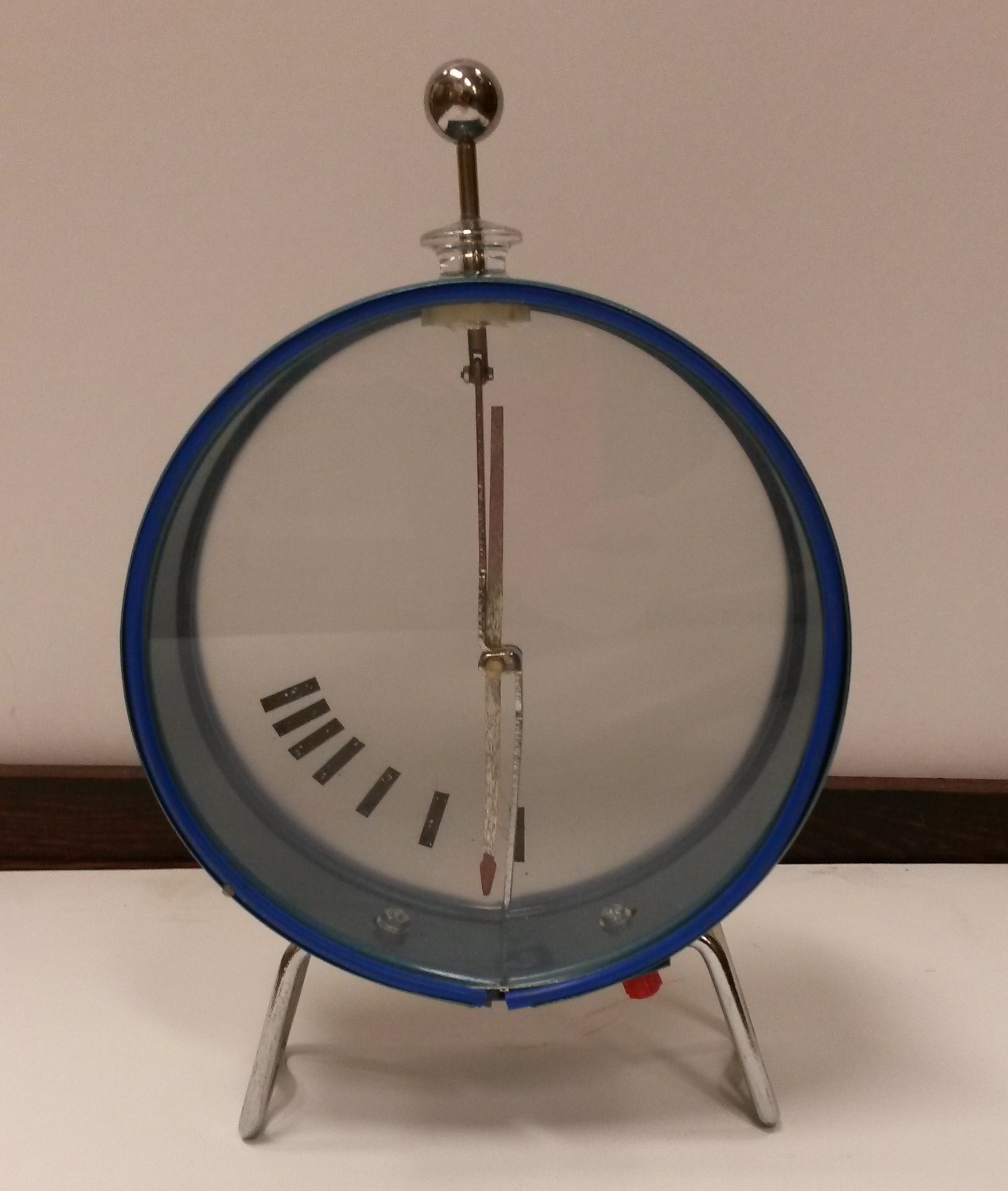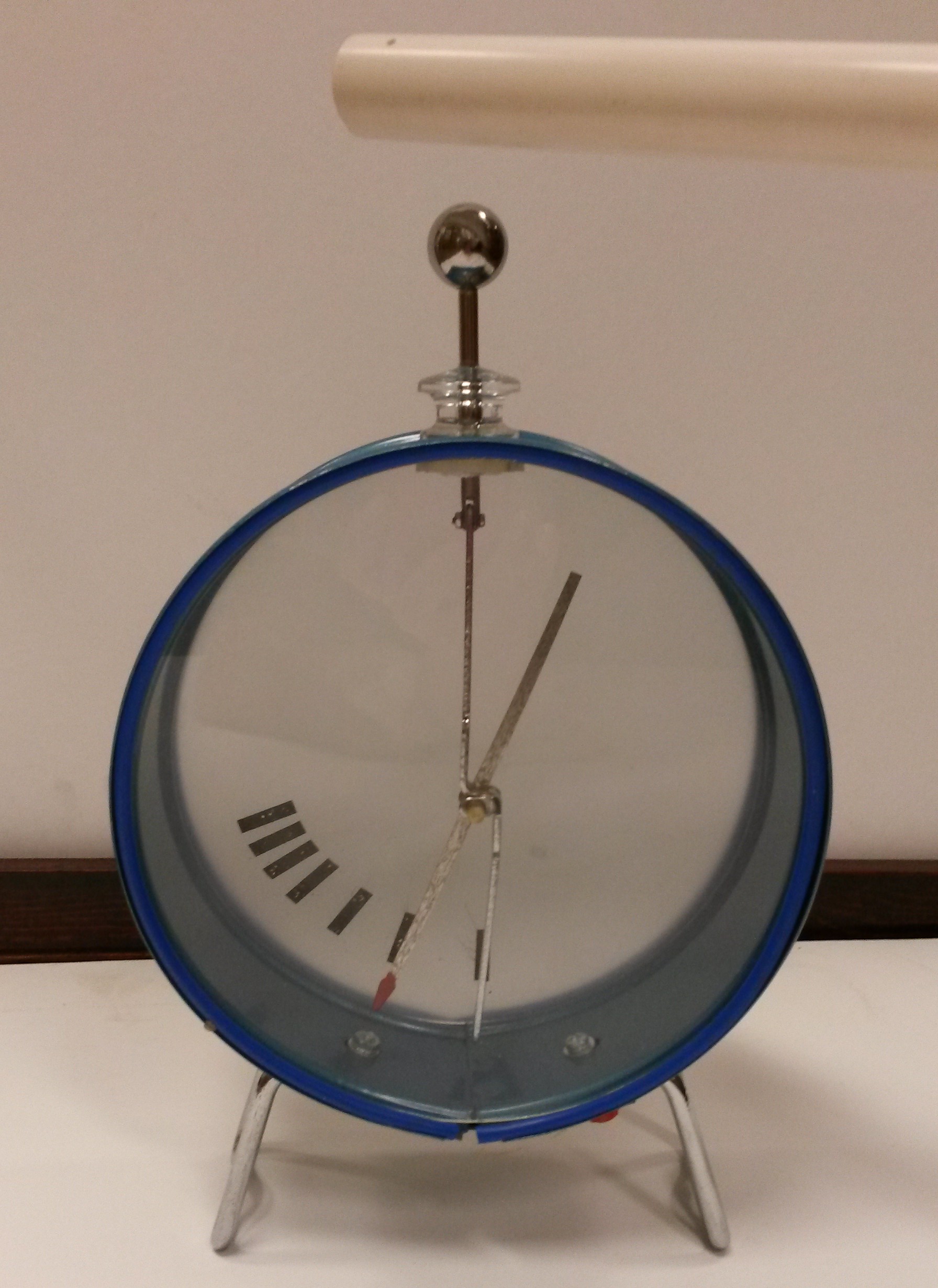Equipment:
- Electroscope (preferably gold-leaf variety or the stand-up one shown above)
- PVC, ebony, or plexiglass rod
- Cloth or rabbit fur
- Video camera (for large classrooms)
Demo:
First, show that an uncharged rod touched to the electroscope has no effect. Then, charge up the rod by rubbing it with the cloth/fur. Now, touching it to the metal ball on the electroscope results in the needle or foil moving! To remove the excess charge, ground the electroscope by touching the metal ball with your hand.
Explanation:
An electroscope is essentially a simple, qualitative charge sensor. The conducting metal ball is mechanically connected to the metal support rod and the rotating metallic needle or piece of thin gold foil. Placing a charged object on the metal ball transfers charge to the electroscope and results in like charges flowing throughout the rod and needle. Because the charges on the rod and needle are now the same, they repel each other, and the needle moves away from the rod. This effect is proportional to the amount of charge transferred. To remove all of the excess charge from the electroscope, simply hold the metal ball with your hand. The excess charges will flow into your body (a conductor).
Troubleshooting: Sometimes it is difficult to amass a significant charge on the electroscope and you may need several attempts to transfer enough charge to register on the dial. We believe this may occur on days where it is especially hot or humid, because air becomes a significantly poorer insulator as humidity increases. This means the charge that is added is quickly dissipated. Please note this may not be a correct or complete explanation; if you have any insights please email us!
Notes:
- It is a good idea to dry off the electroscope using a heat gun before demonstrations.
- A plexiglass rod with silk produces a positive charge. An ebony rod with fur produces a negative charge [This should be tested]
- Gold foil electroscopes are fragile!
- The flat electroscopes for overhead projectors are subpar and tend to break.
- On hot/humid days, it may be better to use the electroscopes that are closed off from the outside air (those with a front and a back plate)
Related Demos:
- Van de Graaf generator

